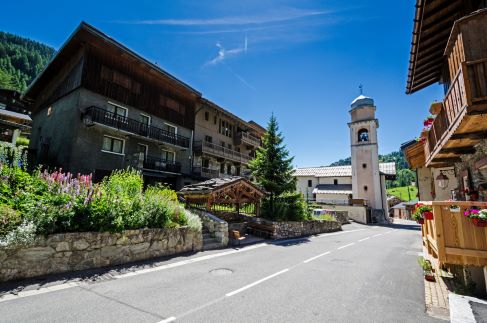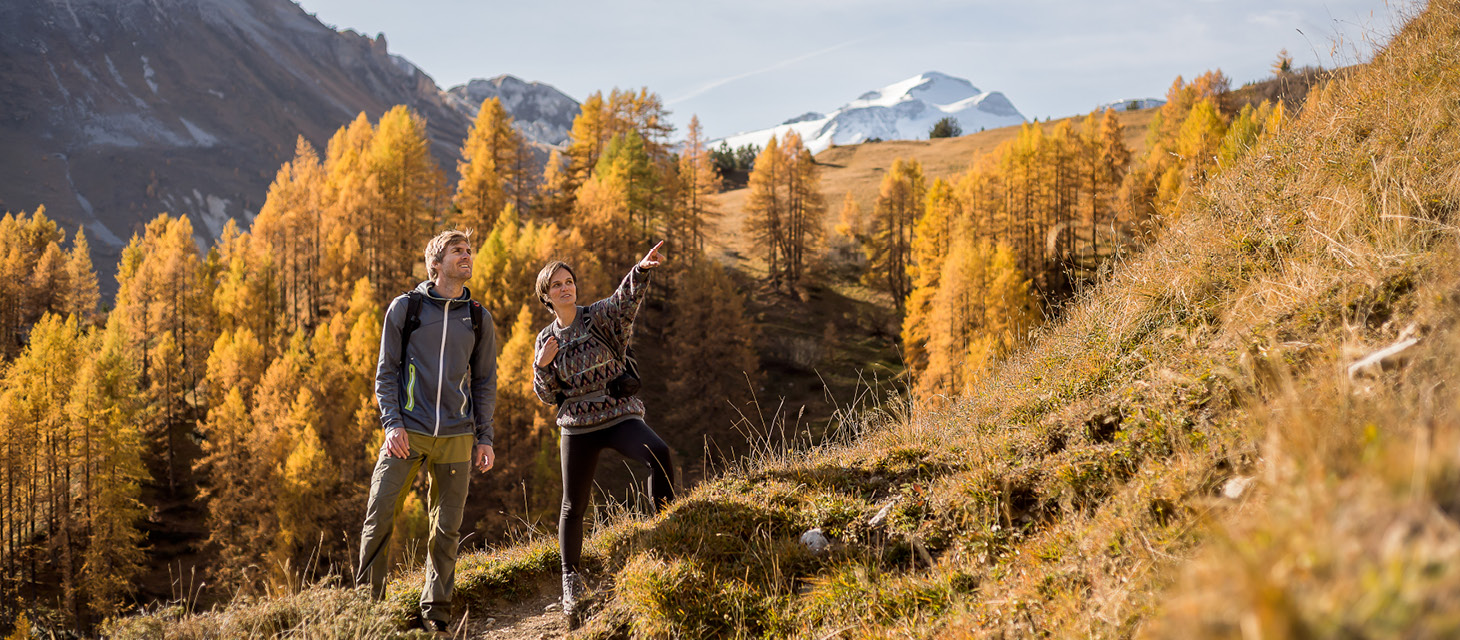
 Olympic cauldron
Olympic cauldron
 Ski ballet area
Ski ballet area
 Freestyle skiing area
Freestyle skiing area
Before becoming one of the most coveted destinations for training camps for professional athletes, Tignes has always been a strong figure in the professional sporting world. Indeed, back in 1992, Tignes hosted three freestyle skiing disciplines during the Albertville Winter Olympic Games: ski ballet, freestyle skiing and for the first time, mogul skiing. Some signs are still visible in the resort today, such as the Olympic cauldron on the left of the Palafour chairlift and the freestyle skiing and ski ballet zone in Tignes Val Claret.
Today we are still pursuing our Olympic adventure, with the recognition and award in November 2020 as being a “Terres de Jeux 2024”. Thanks to this accolade, Tignes will be hosting federation professional athletes for their altitude training camps prior to the Paris Olympic Games 2024. An act of friendly rivalry with our neighbouring ski resort Val d'Isère, who hosted more events during the 1992 Olympic Games of Albertville.
Bonus : A short video of ski ballet, a forgotten discipline but still impressive to watch ! Click the following link : Ski ballet 1992 Olympics.
At Tignes Val Claret, you can also see the halfpipe built in 2009 to host the SuperPipe competition of the Winter X Games Europe, from 2010 to 2013.
Also visible at Tignes le Lac : bachal, chapel.
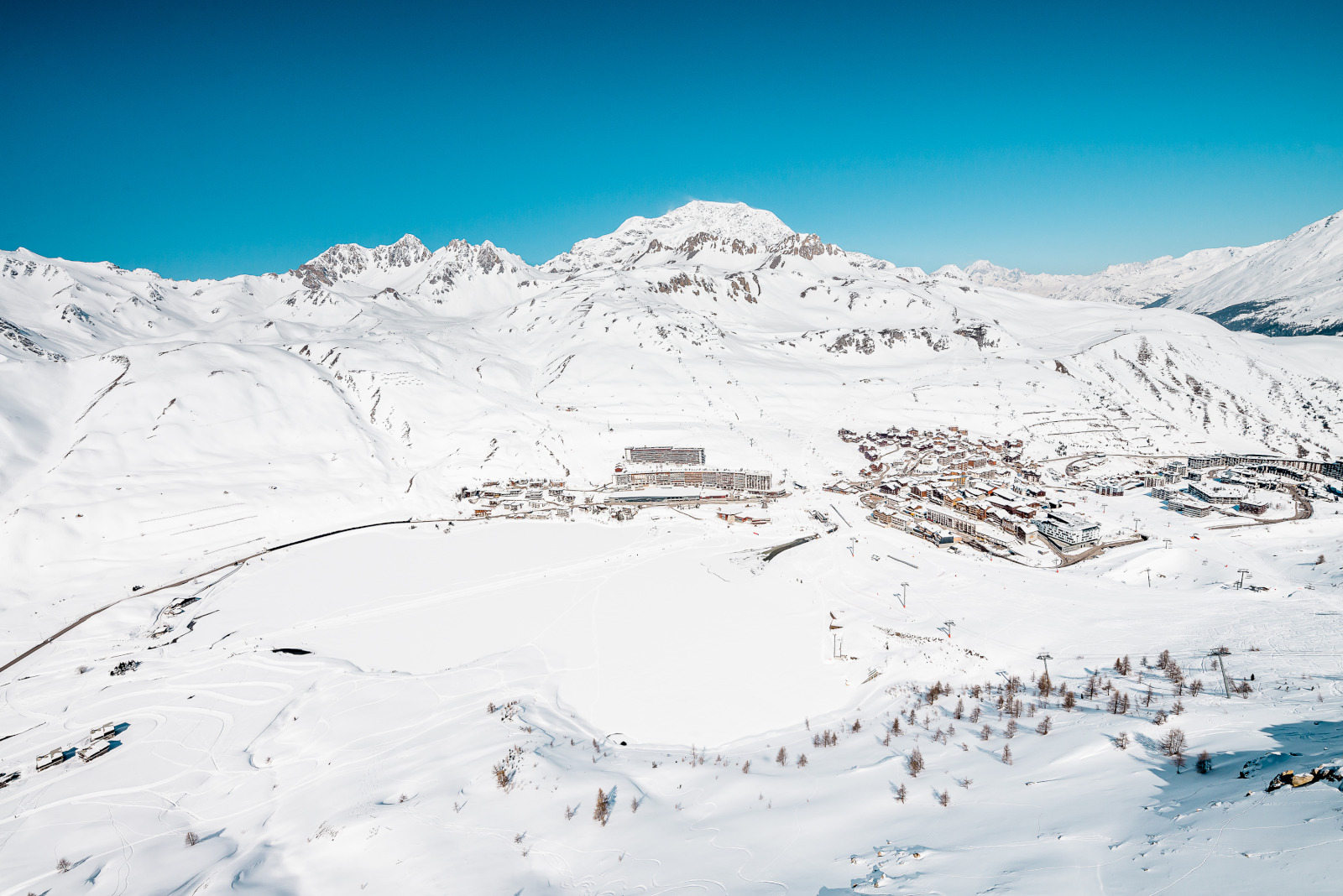
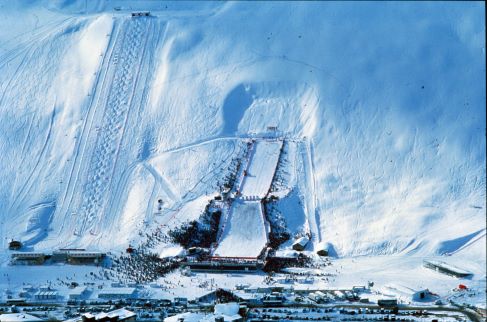
 Chapel of the Mountain Christ's transfiguration
Chapel of the Mountain Christ's transfiguration
Each church or chapel in Tignes is a witness of the evolution of the town. This particular church, also known as The Lake Church (because of its proximity to the lake of Tignes), is a symbol of modern Tignes with its contemporary architecture, and as a contrast to the other churches in the town.
Built between 1959 and 1972, it was the creation of two opposing men, each with their own vision and convictions. On one side, the architect Raymond Pantz (a catholic) and on the other his apprentice Claude Fay (a protestant). Fay even said that the church is a "bastard church" because of the concessions both men made.
The architecture is strongly inspired by the school of Le Corbusier, who was a visionary and influent architect at that time.
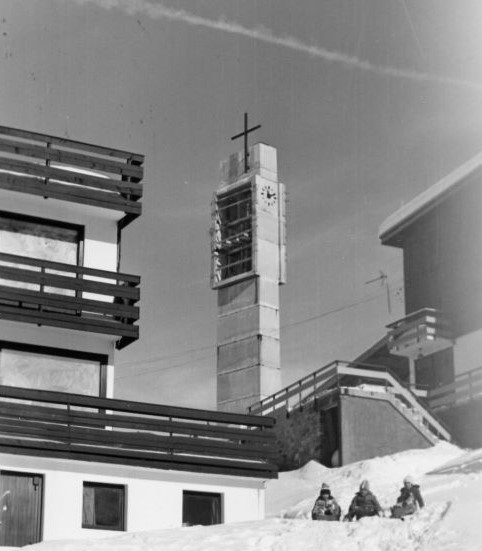
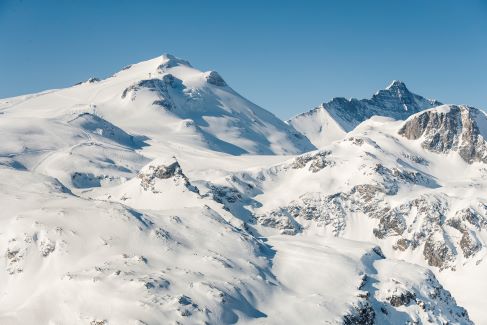
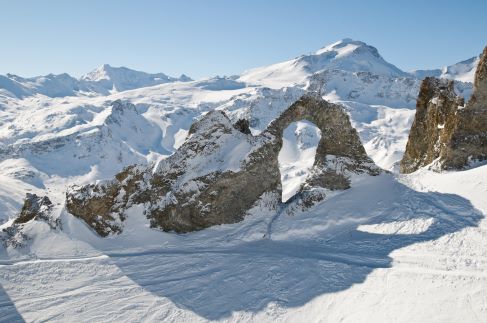
 The Great Ladies
The Great Ladies
 Lake of Tignes
Lake of Tignes
When lakeside, take a moment to look up and admire the surrounding summits... Wonderful aren’t they. But are you able to recognise the "Great Ladies" of Tignes?
Firstly, you will easily be able to distinguish La Grande Motte (3656m high), famous for its glacier (and resort logo by the way). To its right, you can find La Grande Casse (3855 m), with its very steep rock wall and ridge. Behind you, you will see La Grande Sassière (3747m), which is the highest summit in France reachable without any mountaineering equipment during summer time. A good reason to come back next summer?
If you want to immerse yourself fully in our Natural Stadium, there is nothing better than taking the funicular train and cable car for a panoramic view over the entire valley and discovering new summits. Up there you will find the famous Mont Blanc (4807m) and Mont Pourri peaks. During summer, you can enjoy our Altitude Experience, a visit with a local guide that will teach you a lot about our wonderful valley and summits. Do not waste any more time, and come visit us during your next summer holiday!
If the lake is frozen and the path open, do not hesitate in taking a walk over it. Do not be afraid, the ice can be almost 1 meter thick, enough to drive on! Kids laughing and dog sledging will undoubtedly surround you, but have a look to the west side of the lake... You might see a strange mountain. It is the Aiguille Percée (the drilled needle), a famous spot for skiers and hikers during winter and summer.
 Protections of the ski area, roads and people
Protections of the ski area, roads and people
Some more visible than others, there are many items dotted around the area to insure our safety. The most visible are the anti-avalanche fences, with their goal to hold back the accumulation of snow.
During your time exploring the ski area you might come across big metallic tubes protruding from the mountainside; these are GAZEX. They are remotely controlled avalanche triggers. You may equally see racks called CATEX, which route explosives from the bottom of the area where the security patrol wants to trigger an avalanche.
Protecting the ski area requires a high level of prudence and organisation, so that nobody is put in danger. It also depends greatly on the weather. The security patrol monitors intensely the forecast and uses their knowledge and experience to anticipate their actions. During your stay, you might hear some explosions, mainly early in the morning. Do not be afraid, it's for your safety!
If you want to know more about it, go check our article about the ski area protection !
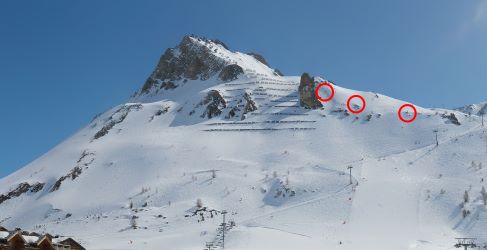
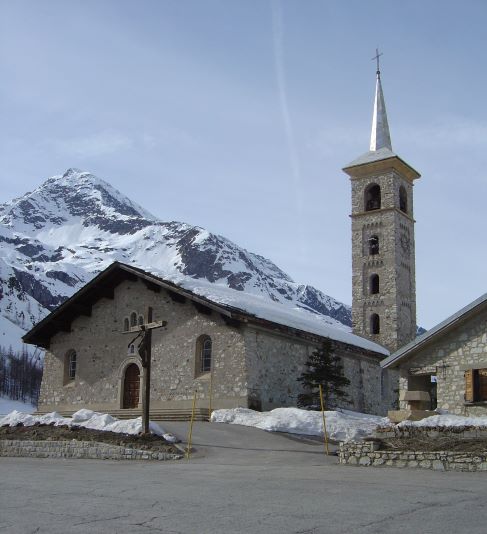
 Saint Jacques de Tarantaise Church
Saint Jacques de Tarantaise Church
In the village of Tignes 1800, the Saint Jacques de Tarantaise Church is named after the patron saint of Tignes (who is represented on the facade) and is part of our Romanesque heritage. This monument holds a special meaning for locals. Built in 1952, this church is an exact replica of the one located in the historic village of Tignes, before the submergence of this village following the creation of the dam.
Today we can no longer see any signs of the old village, flooded in 1952 and lying in the depths of the Chevril lake. This was a big trauma for locals, forced to leave behind them years of work and history.
Thanks to the strong solidarity of the Tignards (name of the people living in Tignes), most of the original furniture and religious artefacts were saved, recreating a familiar place for locals to meet and pray. Only the paintings on the walls and the ceiling were not reproduced. If the architecture of the church is Romanesque in style, its altarpiece is baroque. This explains why the church is a step in the “Baroque path”, a historical and famous touristic tour in the Savoie region.
 The Tignes dam
The Tignes dam
The creation of the Tignes’ dam is a milestone in the life of its locals. It forced them to leave their historical village, to spread out around the valley and to build a new town higher up the mountain. The dam took 11 years to build, from 1941 to 1952, measures 180m high, 300m long and 43m wide and submerged the old town with 230 million m3 of water.
During the summer of 1989, Jean-Pierre Pierret began to draw a 12 000m² mural on the dam's arch representing Hercules, and the giant of Tignes was born. Nowadays not a lot remains from the 6 tonnes of temporary paint, but if you focus intently, you might still see the giant's face.
If you want to learn more about the incredible story of Tignes and its dam, do not hesitate to visit our library. You will find books and pictures that will take you back in time!
Also visible in Tignes 1800: cemetery, Notre Dame de la Pitié des Sept Douleurs chapel, war memorial.
Also visible in Tignes Les Boisses: Saint Maurice chapel, bachal (a typical fountain made of a drilled wood trunk).
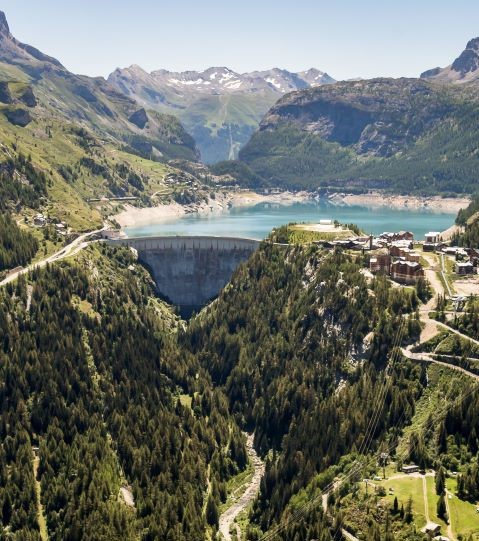
 Saint-Pierre aux Liens Church
Saint-Pierre aux Liens Church
Located in Tignes Les Brévières at an altitude of 1500m this church, built in 1727, is part of Tignes’ baroque heritage. Its construction was possible mainly thanks to the deniers (the coin during the Roman era) of Pierre-Henri Martin, a wealthy merchant from Turin.
The bulb spire reminds us of the German influence due to the migration of the locals at that time.
In the area, you can also see: Le Sacré Cœur and Notre Dame sematories, the cemetery.
